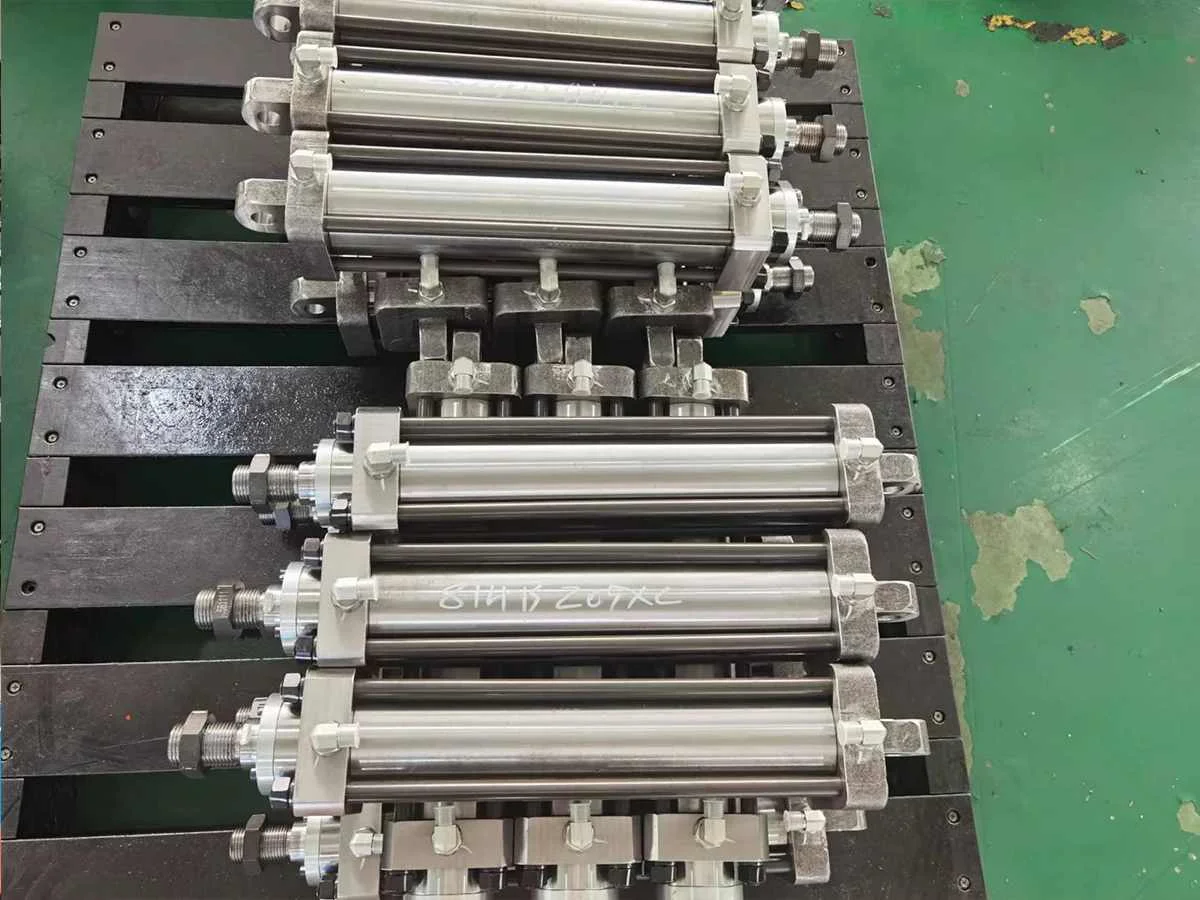With the development of industrialization, hydraulic systems have become an indispensable part of modern industry. In the hydraulic system, the tie rod cylinder is one of the important components. Its function is to convert hydraulic energy into mechanical energy to achieve mechanical movement. Therefore, choosing a suitable tie rod cylinder is crucial for the normal operation of the hydraulic system. This article will introduce you to how to choose from the following aspects.

1. Understand the basic structure and working principle of tie rod cylinder
Before choosing a tie rod cylinder, we need to understand its basic structure and working principle. Tie rod cylinder consists of cylinder block, piston, piston rod, seals, tie rods, etc. When hydraulic oil enters the cylinder block, the piston moves forward, pushing the piston rod and tie rod to move together. When the hydraulic oil is discharged from the cylinder block, the piston moves backward, causing the piston rod and tie rod to return to their original positions. Therefore, the working principle of the tie rod cylinder is to use hydraulic force to push the piston to achieve mechanical movement.
2. Determine the usage environment and working conditions of tie rod cylinder
Before choosing a tie rod cylinder, we need to determine its usage environment and working conditions. This includes the cylinder's working pressure, working temperature, working speed, working frequency, working environment, and other factors. Different usage environments and working conditions have different requirements for the selection of tie rod cylinders. For example, a tie rod cylinder used in a high-temperature environment needs to be resistant to high temperatures, while a tie rod cylinder used in a high-pressure environment needs to be resistant to pressure.
3. Select the appropriate cylinder size and model
After determining the usage environment and working conditions of the tie rod cylinder, we need to select the appropriate cylinder size and model. The size and model of the cylinder determine its load-bearing capacity and working efficiency. Therefore, when selecting the cylinder size and model, we need to choose according to actual needs. Generally speaking, larger cylinders can carry greater loads but work less efficiently; smaller cylinders can increase work efficiency but have lower load-carrying capabilities.
4. Select appropriate seals and materials
When choosing a tie rod cylinder, we also need to choose suitable seals and materials. The quality and material selection of seals have a significant impact on the service life and performance of the cylinder. Generally speaking, seals need to have properties such as wear resistance, corrosion resistance, and high temperature resistance; and the selection of materials needs to be based on the use environment and working conditions.
5. Choose the right brand and supplier
When choosing a tie rod cylinder, we also need to choose the right brand and supplier. Choosing well-known brands and reputable suppliers can guarantee the quality and after-sales service of the cylinder. At the same time, we also need to compare and select based on actual needs to ensure that the selected cylinder meets our requirements.
In summary, selecting the appropriate tie rod cylinder is critical to the performance and longevity of your hydraulic system. Proper selection and maintenance can improve the efficiency of the hydraulic system and extend the service life of the hydraulic system.
When choosing a tie rod cylinder, we need to understand its basic structure and working principle, determine the use environment and working conditions, select the appropriate cylinder size and model, select the appropriate seals and materials, and choose the appropriate brand and supplier. Only in this way can we choose the tie rod cylinder that meets our requirements to ensure the normal operation of the hydraulic system.
https://www.toringcylinder.com/How-to-choose-the-right-tie-rod-cylinder-for-your-hydraulic-system.html